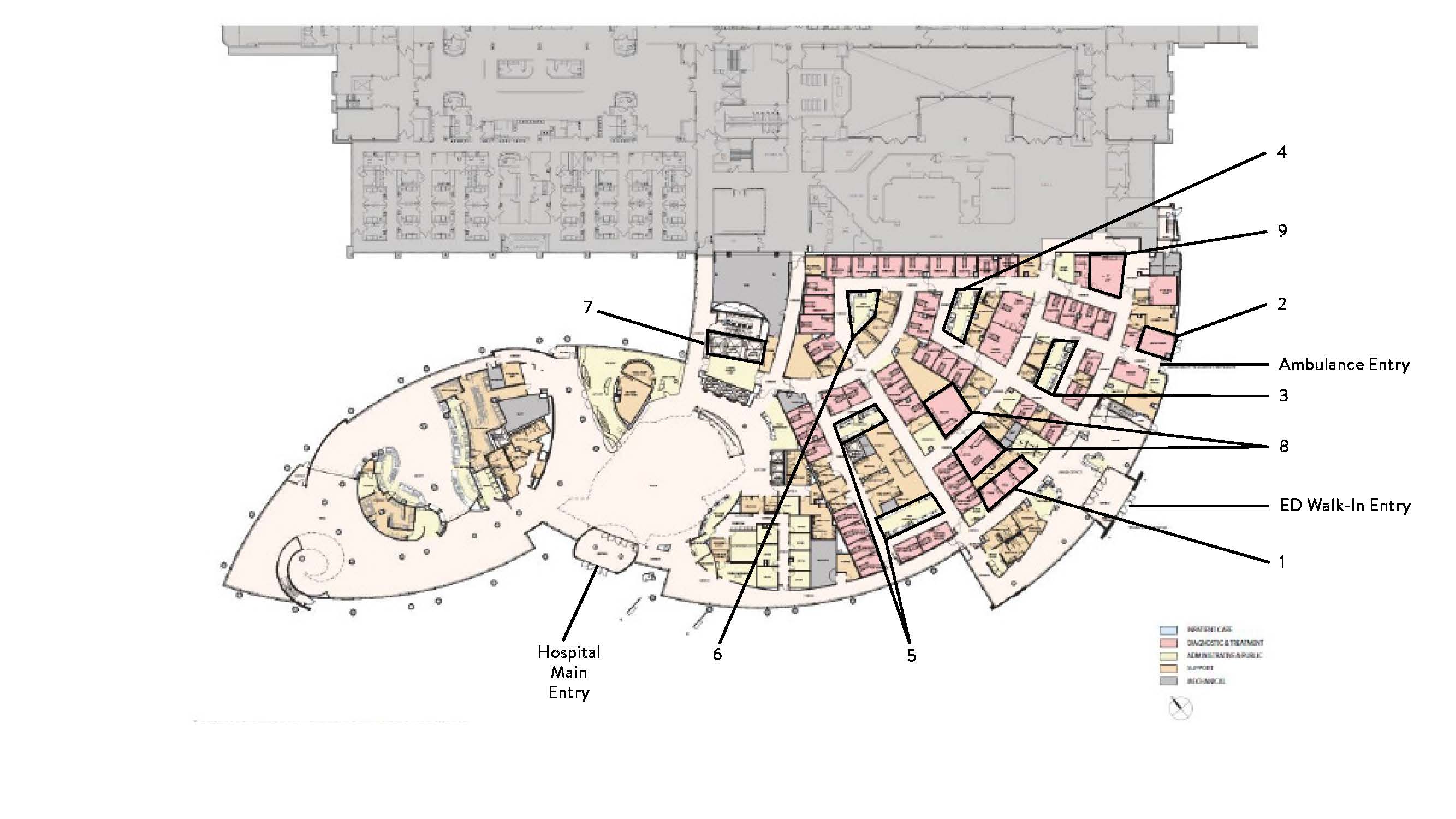ACEP ID:
- My Account
- My CME
- Sign Out
ACEP ID:
Nemours Alfred I. DuPont Hospital for Children Expansion Project
Wilmington, Delaware
FKP
Houston, Texas
Michael C. McVay, Senior Vice President/Senior Project Architect
Opened November 2014
Key Words
Operational efficiency
Patient/staff satisfaction
Space issues
Level I pediatric trauma center
Problem/Situation
The existing 20,700-sf emergency department dated back to 1986 with very little renovation over 25 years (40,000 visits per year, 17 core positions, 6 fast track = 23 + 6 observation). The master plan projected that visits would increase to more than 58,700 per year. As the only Level I pediatric emergency department in Delaware, the ED had long wait times because of high volume and required a leaner process of patient throughput. The department was internally land locked, and external expansion would be difficult.
Solution
The solution was to construct a newly relocated emergency department of 37,600 sf as part of a new bed tower expansion. The idea was to create a “no wait ER” (2 trauma, 24 core positions, 9 fast track = 35 + 9 observation). The triage has individual assessment rooms that can swing into ER action if required, and observation rooms can swing with other areas (1). The design includes a dedicated biohazard area with an isolated HVAC system to accommodate emergency care patients (2). There are 5 team stations for 3 major areas: 1 for the trauma area (3), 1 for the truly emergent area (4), 2 for the fast track areas (5), and 1 for the observation area (6). A direct link to a rooftop helipad is provided with a trauma-sized elevator to provide access to the ER (7). There are 2 general radiology imaging rooms (8) and a CT dedicated to the ER (9). The CT is positioned for easy access from the imaging department so that it can also be used for other procedures in the hospital. There is a walk-in public entrance with adjacent surface parking and a dedicated emergency entry with a covered drive. The department is conveniently located near the hospital food services and dining.
Lessons Learned
Design constraints within the existing hospital are being addressed in the master plan to provide more efficient adjacencies for the ED in the future. For example:
Editorial Commentary
This project is a pediatric hospital ED. Its primary characteristic is that the treatment rooms are divided into 5 separate pods that function more or less autonomously. One of the pods is a very large observation area. Treatment rooms are to a large extent universal in size. The ED uses conventional patient flow patterns.
